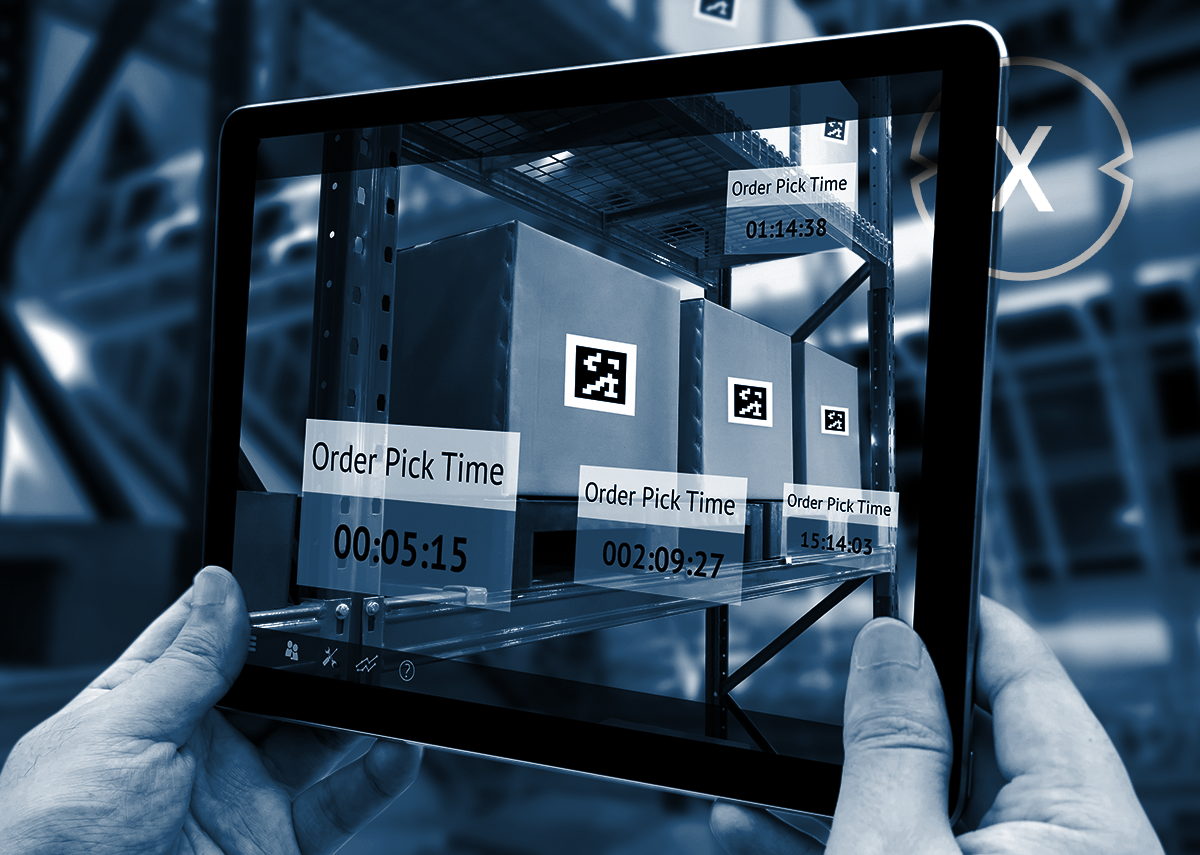Digital twins for load carriers
Digital twins, especially prototypes or samples for load carriers, e.g. on system pallets in pallet warehouses or storage lifts, are 3D demos with augmented reality and represent the next step in optimizing weakened supply chain processes.
Companies in the manufacturing and retail sectors have long been focusing on digitalization in production, warehousing, and sales. The primary goals are cost reduction, increased efficiency, and process reliability. The introduction of 3D demos with augmented reality is another important step toward further optimizing these processes – especially during times of weaker supply chains.
Just try out our universally applicable (B2B/Business/Industrial) Metaverse configurator for all CAD / 3D demo options:
Augmented Reality in Mechanical Engineering
Augmented Reality (AR) is an interactive, computer-generated image of the real world enriched with additional virtual objects or information. The technology is already used in various fields and is enjoying increasing popularity. In mechanical engineering, AR can be used for product presentation and visualization, as well as for planning and carrying out maintenance and repair work.
The applications of AR in mechanical engineering are diverse, ranging from product presentations to the planning and execution of maintenance and repair work. AR makes it possible to represent complex machine structures in 3D and to react immediately to changes or errors. The technology can also be used in employee training to facilitate the operation of complex machines or the execution of specific work steps.
AR has the potential to sustainably improve mechanical engineering and significantly simplify the daily work of employees. In the future, the technology will likely gain even more importance and establish itself in more and more areas of mechanical engineering.
What is meant by Augmented Reality?
Augmented Reality (AR) is a technology that allows virtual objects to be embedded in the real world. Using AR glasses or smartphones, users can, for example, display information about real-world objects or interact with virtual characters.
The idea behind AR is to blur the lines between the real and digital worlds, creating a new, immersive experience. In recent years, AR has become a buzzword in the tech industry, and more and more companies are adopting the technology.
What is the difference between VR and AR?
AR and VR stand for Augmented Reality and Virtual Reality. AR is the technology where computer data is superimposed onto the real world to make it appear real to the viewer. A well-known example of this is the game Pokémon Go. VR, on the other hand, is the technology where the viewer is immersed in a completely computer-generated world. This world can be real or fantastical. A popular example of this is Facebook's Oculus Rift.
More about it here:
How does augmented reality work?
Augmented Reality (AR) is a technology that allows virtual objects to be embedded in the real world. This technology is already used in many areas, such as the gaming industry, to offer players a realistic gaming experience. AR is also used in other industries, for example in medicine, to help doctors treat patients.
AR works using head-mounted displays (HMDs), which allow users to see virtual objects in the real world. HMDs are connected to either a computer or a smartphone. In most cases, however, AR technology is used via a smartphone, as these devices already have the necessary components.
AR technology uses computer vision algorithms to project virtual objects into the real world. The position and size of the virtual object are calculated based on the user's position and movement. This ensures that the virtual object always appears in the correct place.
AR is a relatively new technology and will certainly be further developed in the coming years. In the future, AR will likely be used in more and more areas, making our world even more colorful and interesting.
What types of augmented reality are there?
AR augments the real world with computer-generated elements, thus actively interacting with the environment. This interplay between the real and virtual worlds makes it possible to deliver information in real time. For example, a salesperson can show a customer directly on-site which products are still available and whether they are in stock in the desired color or size. Even more complex information can be easily communicated to potential buyers in this way.
There are different types of AR, which differ, among other things, in the technologies used and the area of application:
- Markerless AR
- Projection-based AR
- Video-based AR
The future of augmented reality
When it comes to the future of augmented reality, there are many different opinions. Some people think that the technology will be very advanced in the next few years and will have a major impact on our everyday lives. Others are not so sure and think that it will be several more years before augmented reality is truly mainstream.
Augmented reality is already present in many areas and will become even more widespread in the future. The technology can already be used in smartphones and tablets and will also be integrated into glasses and contact lenses in the future. More and more people will have access to augmented reality in the future, and the technology will continue to improve.
Augmented reality has the potential to drastically change our lives. In the future, we will no longer only interact with the real world around us, but also with the digital world. We will be able to access information about the things around us and project virtual objects into the real world. Augmented reality will transform the way we work, learn, and play, opening up a completely new perspective on the world.
Are you looking for technical and strategic advice for the 3D visualization of digital twins and augmented/extended reality solutions? Xpert.Digital can help!
I am happy to be available to you as a personal consultant for Augmented / Extended Reality solutions.
You can contact me by filling out the contact form below or simply call me on +49 89 89 674 804 (Munich) .
I'm looking forward to our joint project.
Xpert.Digital – Konrad Wolfenstein
Xpert.Digital is a hub for industry with a focus on digitalization, mechanical engineering, logistics/intralogistics and photovoltaics.
With our 360° business development solution, we support well-known companies from new business to after sales.
Market intelligence, smarketing, marketing automation, content development, PR, mail campaigns, personalized social media and lead nurturing are part of our digital tools.
You can find out more at: www.xpert.digital – www.xpert.solar – www.xpert.plus


